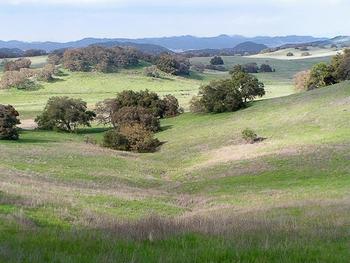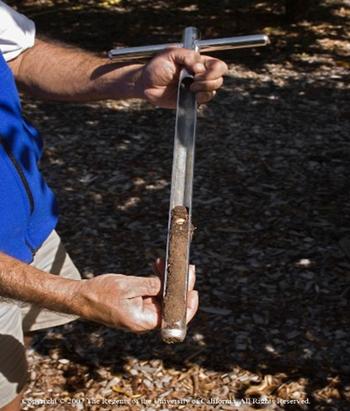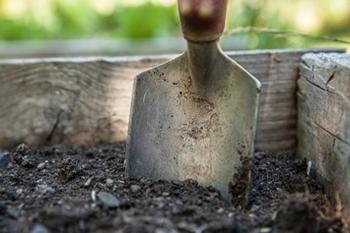Spring 2024
How to care for soil

How do you keep your soil healthy?
The best way to build and maintain healthy soil is to create a comfortable habitat for the organisms that live in it. Here’s how:
- Add organic material like compost to improve soil structure and provide a steady stream of nutrients.
- Maximize soil cover with mulch and plants to moderate soil temperature, conserve moisture, and encourage fungi, bacteria, and arthropods.
- Minimize disturbance by avoiding tilling or turning soil.
- Grow a wide variety of plants to support and encourage underground microorganisms.
- Minimize the use of chemicals, as many fertilizers and pesticides may be toxic to soil microorganisms.
- Learn more about keeping your soil healthy
 For a detailed analysis of your soil, send a soil sample to a laboratory. Photo: Chuck Ingels
Not sure if your soil is healthy? Test it to be sure.
For a detailed analysis of your soil, send a soil sample to a laboratory. Photo: Chuck Ingels
Not sure if your soil is healthy? Test it to be sure.

Your garden provides clues as to whether your soil is in good shape. Indicators of healthy soil include:
- Productive, good-looking plants
- Earthworms
- Water that penetrates easily
- Soil that is easy to work
- Learn more about what constitutes healthy soil
Not sure about your soil? The best way to know if it’s healthy is to evaluate it. Testing soil is not difficult, and the information gleaned could mean the difference between success and failure in your garden. Start by collecting samples to evaluate it yourself or, for a detailed analysis, send it to a laboratory. Learn more about evaluating your soil.
Back to basics: what is soil?
Soil is the upper layer of earth, which can be a few inches or hundreds of feet deep. It is a naturally occurring mixture of inorganic and organic elements, with the former resulting from a breakdown of rocks and the latter from a decay of organic matter. Ongoing physical, biological, and chemical reactions define soil’s structure, texture, and color.
- Soil texture is the proportion of mineral particles (sand, silt, and clay), which affects plant growth. Mineral particles provide plant nutrients. Fine textured soils like clay have slower air and water movement and hold more mineral nutrients than coarser soils.
 Building healthy soil is a cornerstone of an Earth-friendly garden. Photo: PickPik
Building healthy soil is a cornerstone of an Earth-friendly garden. Photo: PickPik - Soil structure is the arrangement of soil particles into small clumps, binding together sand, silt, clay, and organic matter. Soil structure affects the ability of plant roots to penetrate soil and to retain moisture and nutrients.
- Soil pH is the relative acidity or alkalinity of soil. Acidic soils have pH close to 0, and alkaline soils approach 14. The availability of nutrients to plants and the population and activity of microorganisms depend on relative soil acidity or alkalinity.
Learn more about the physical and chemical properties of soil.

